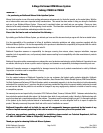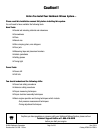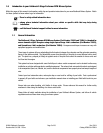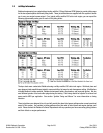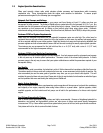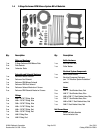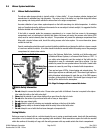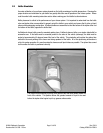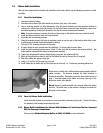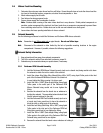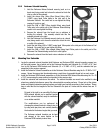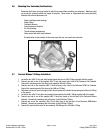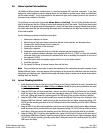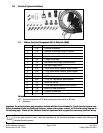
©2004 Edelbrock Corporation
Brochure No. 63-0190 - DC/mc
Rev. 03/04
Catalog #70003 & #70004
Page 7 of 28
1.3 Engine Operation Considerations
When used correctly, nitrous oxide safely elevates cylinder pressures and temperatures while increasing
combustion rate. These characteristics make the engine more sensitive to detonation. To ensure proper
performance and engine life, the following tips are suggested:
Adequate Fuel Pressure and Delivery:
When designing your fuel system, plan on your pumps and lines flowing at least 0.1 gallons per hour per
horsepower at rated pressure. The testing at Edelbrock was conducted with a fuel pressure of 6.5 to 7 psi. Any
variation from this fuel pressure will cause your final air/fuel ratio to change. Consult our technical department for
any questions on fuel pressure and its effects on final air/fuel ratios when using nitrous oxide. Edelbrock
recommends setting your fuel pressure flowing. We offer a flow tool (Edelbrock Part #76506) to help in this process.
Performer RPM Fuel System Requirements:
When using the Performer RPM series kits, the potential horsepower gains are quite high. The critical area for
continued success with your nitrous system lies in the fuel system. In most cases, an auxiliary fuel supply system
will be a required addition to your nitrous system. A high flow electric fuel pump and high capacity adjustable fuel
pressure regulator are both recommended to ensure the fuel flow rate is enough to ensure proper system operation.
The minimum size we recommend for the fuel inlet feed line is a –6 (3/8” inch), with a size of –8 (1/2” inch)
recommended for the higher horsepower settings.
Performer RPM System Monitoring Requirements:
Fuel pressure and nitrous pressure gauges are very important. Your fuel pressure must be set properly and a gauge
is the only sure way to monitor system performance. The same is true of the nitrous bottle pressure. A nitrous
pressure gauge is the only way to ensure that your system calibrations are within the parameters required of your
horsepower setting.
Fuel Quality:
Because nitrous oxide is an oxidizer, fuel selection is critical. Both octane and fuel consistency affect fuel burn rate.
The oxidizer quality of nitrous oxide will accelerate the burn rate, so we recommend a high quality of gasoline. We
also recommend you use the same grade of gasoline every time you use your nitrous oxide system. This will
maintain the same fuel burn rate every time. Please refer to the jet map footnotes for information on what fuel types
and fuel qualities that were used during the testing here at Edelbrock.
Engine System Upgrades:
With all performance modifications complementary system upgrades will always serve to elevate the consistency
and longevity of an engine, especially when using nitrous oxide as a power adder. Ignition upgrades, intake
manifold upgrades, and fuel controls and fuel pumps can all add to the performance of a nitrous oxide injected
engine.
Cast Pistons/Hypereutectic Pistons:
With all nitrous oxide applications, forged pistons are highly recommended. Because of heightened potential for
detonation, cast pistons and hypereutectic pistons are more prone to failure and cannot handle horsepower
increases over 125 hp. Never initiate your nitrous system before you are at full-load, wide-open throttle conditions.
Cast pistons will not be able to survive this kind of stress.




